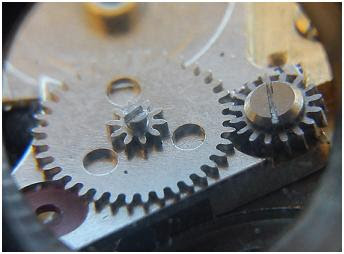I haven't been able to work on the watch for a while now due to school work. However, I have been wearing it for a week and it works fine, and I've had a lot of time to think about how I want the finish. I have decided not to over-finish the watch since I like the raw look, or as an enthusiast would say, tool watch look.
My brother helped me with some photoshopping to help me see the different colour combinations, and we both agreed on having dark bridges (black rhodination), blue or purple steel details, and brass gear train wheels. I wanted to have a matt finish on the bridges so I decided to try sandblasting. We have built a makeshift sandblasting box, it looks like MacGyver has been in the building, I don't dare to show a picture of it, but the important thing is that it works, even though there is a lot of cleaning up to do after the operation.
For some reason I have saved all my old rodico, not knowing what it would be good for, today I was thank full that I had saved it. It turned out that the rodico is very resistant to the sand and was extremely good for masking the parts that were not supposed to be blasted.
I have also removed material from the gear train bridge to show more of the movement.


























